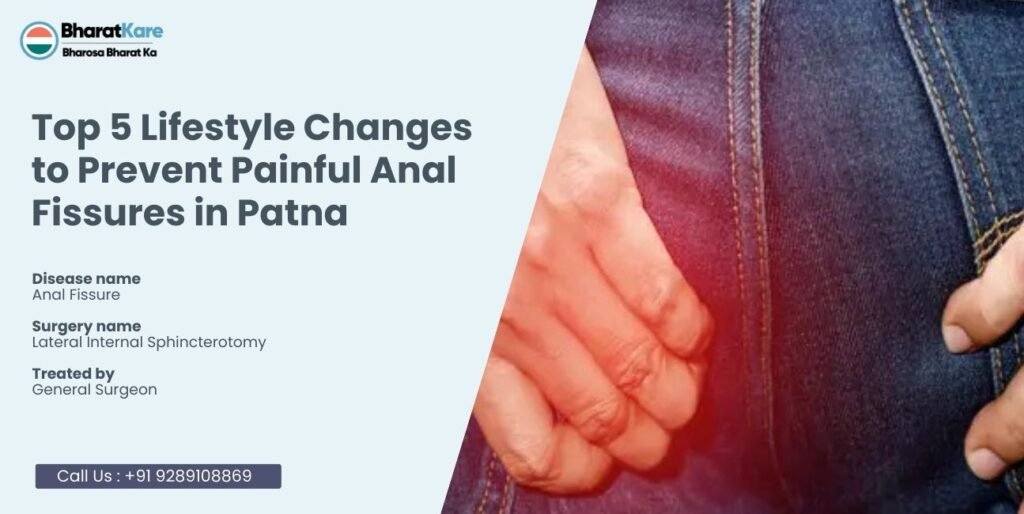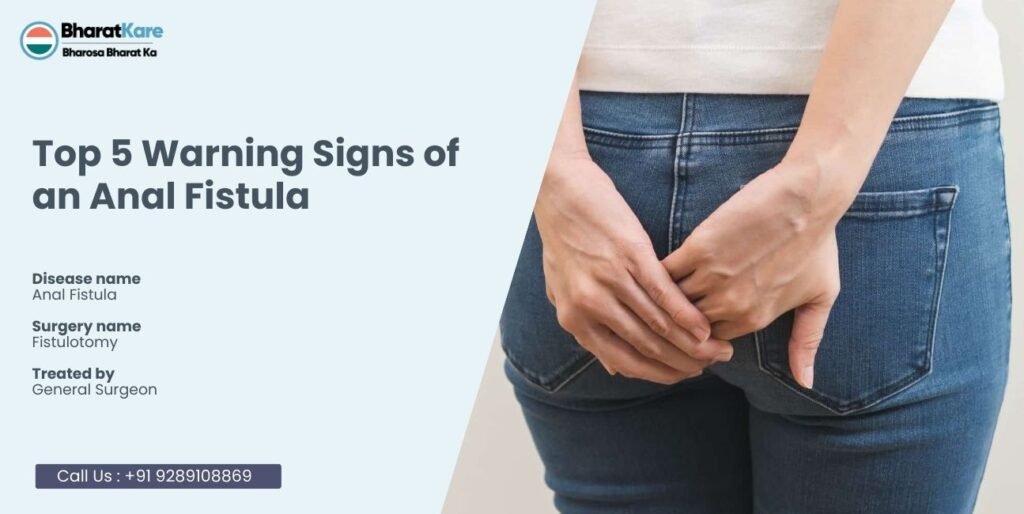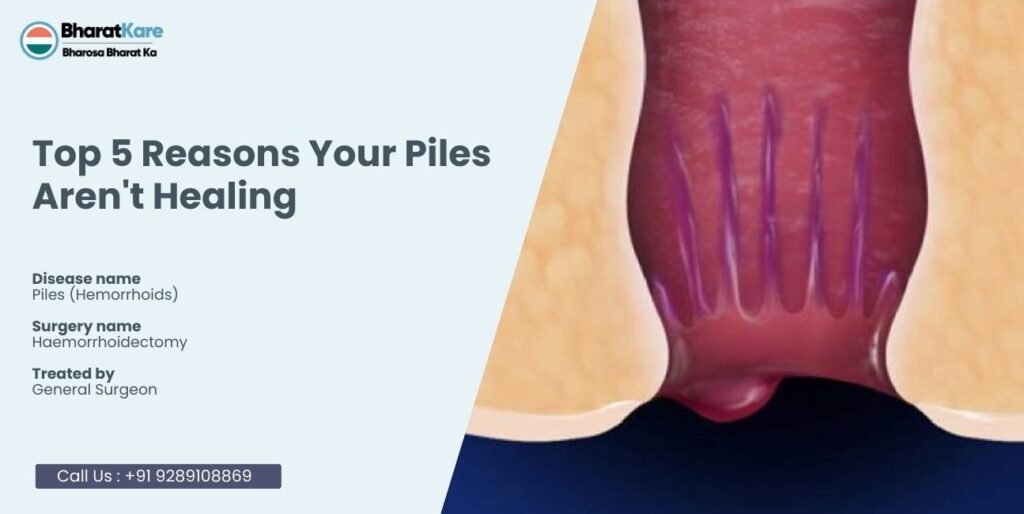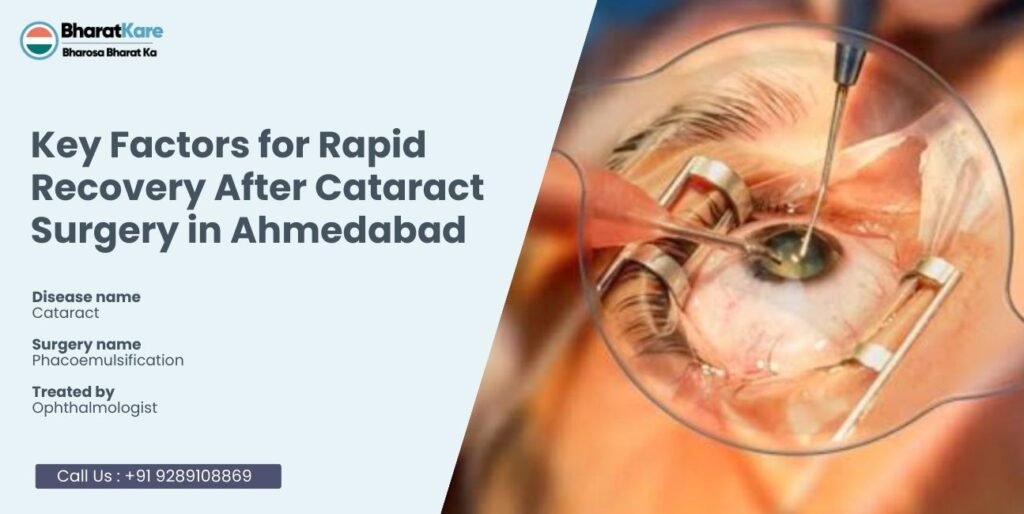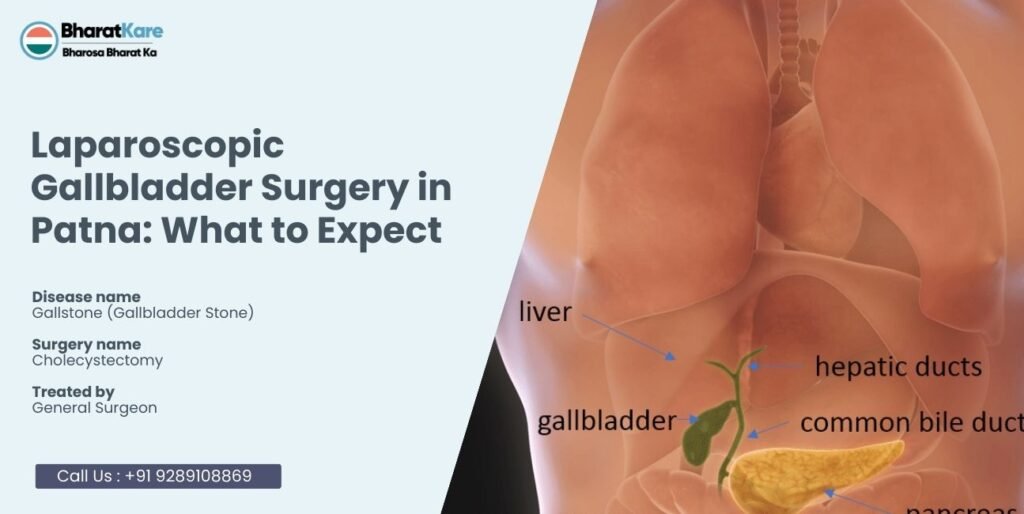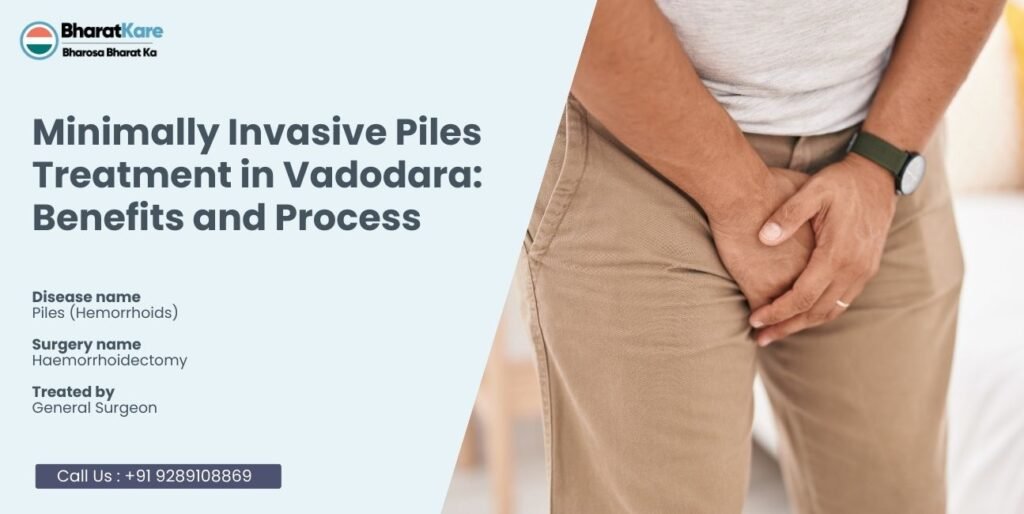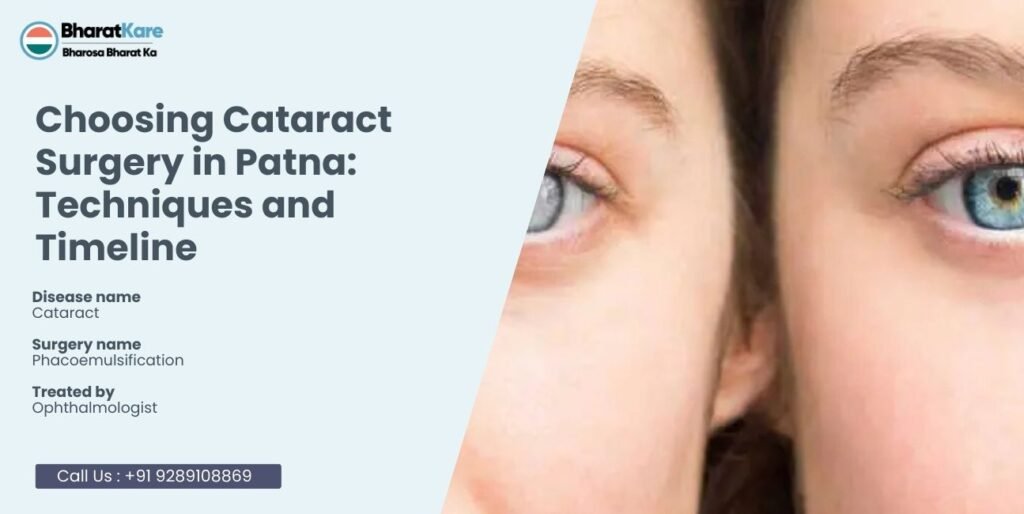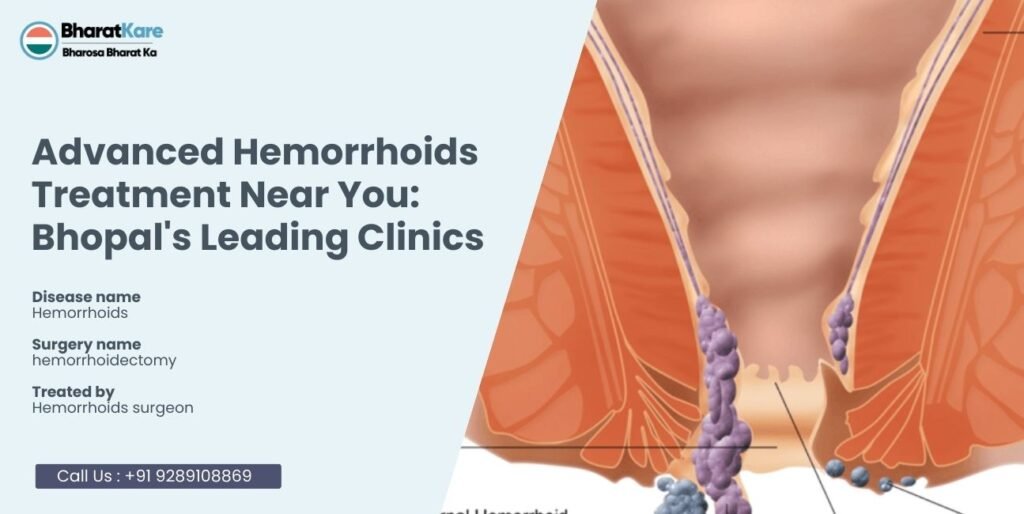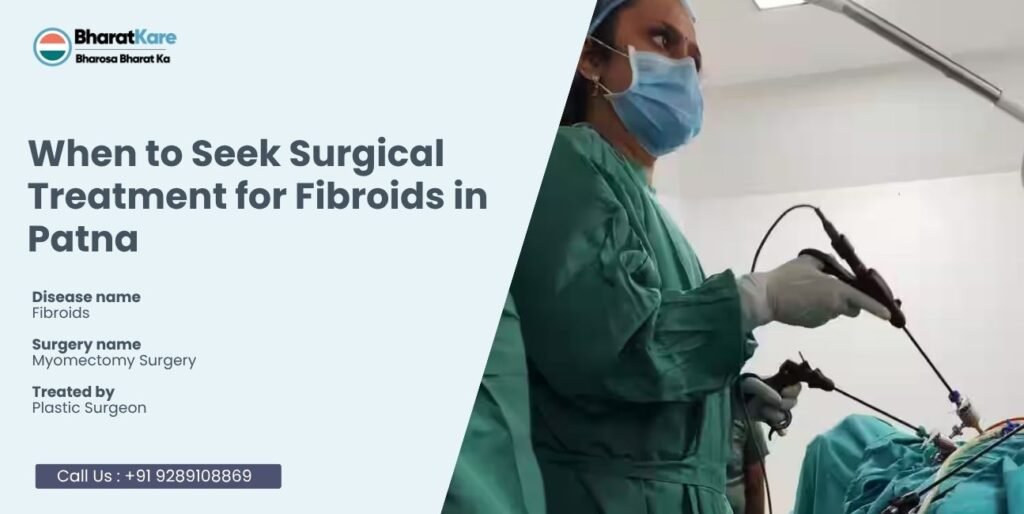Top 5 Lifestyle Changes to Prevent Painful Anal Fissures in Patna
Home About us Services Proctology Piles Treatment in India Anal Fissure Treatment Anal Fistula Treatment Pilonidal Sinus Surgery Urology Enlarged Prostate Treatment Kidney Stone Laser Treatment Laser Circumcision Treatment Stapler Circumcision Varicocele Surgery General Surgery Diabetic Foot Ulcer Treatment Laparoscopic Hernia Surgery Lipoma Treatment Gallstone Treatment in India Ophthalmology Cataract Surgery LASIK Eye Surgery Gynecology Hymenoplasty Surgery Hysterectomy Treatment Uterine Fibroids Treatment ENT Eardrum Repair Surgery Functional Endoscopic Sinus Surgery Septoplasty Surgery Tonsillectomy Surgery Plastic and Cosmetic Surgery Breast Augmentation Surgery Breast Lift Surgery Breast Reduction Surgery Gynecomastia Surgery Liposuction Treatment Rhinoplasty Surgery Orthopedics ACL Tear Surgery Hip Replacement Surgery Knee Replacement Surgery Vascular Surgery Deep Vein Thrombosis Treatment Laser Treatment for Varicose Veins Oncology Breast Lump Removal Surgery Blogs English Blog Hindi Blog Contact us X Book Free Appointment Top 5 Lifestyle Changes to Prevent Painful Anal Fissures in Patna You know what happened to me just last Tuesday? I was having my usual morning tea when Mrs. Sharma from the neighborhood dropped by, looking quite uncomfortable. After some hesitation, she finally opened up about something that had been bothering her for weeks – those dreaded anal fissures. “Doctor,” she said, her voice barely above a whisper, “I wish I’d known about this earlier. Maybe I could’ve avoided all this pain.” Her words really hit home because, honestly, she’s not the first person to tell me this. In fact, I hear similar stories almost every week. The embarrassment, the delayed treatment, the unnecessary suffering – it’s all so preventable when you know about the top 5 lifestyle changes to prevent painful anal fissures. Look, I get it. Nobody wants to talk about their bathroom troubles, right? It’s awkward, it’s personal, and frankly, it can be downright embarrassing. But here’s the thing – I’ve been practicing medicine for over two decades, and if there’s one thing I’ve learned, it’s that the problems we’re most reluctant to discuss are often the ones that can be fixed most easily. Living here in Patna, I’ve seen how our local habits sometimes work against us. We love our spicy food (and why shouldn’t we?), we’re dealing with increasingly busy schedules, and let’s be honest – the heat doesn’t make staying hydrated any easier. But implementing these top 5 lifestyle changes to prevent painful anal fissures doesn’t mean giving up everything you enjoy. It’s actually about making small tweaks that’ll make you feel so much better overall. Call Us : +91 9289108869 Happy Patients 500 K Disease 98 + Cities 20 + Doctors 40 + What Exactly Are We Dealing With Here? Alright, let me paint you a picture that’s probably all too familiar. You’re sitting there, maybe reading the newspaper or scrolling through your phone, when suddenly you feel that urgent need to use the bathroom. Nothing unusual, right? But then – ouch! – there’s this sharp, tearing pain that makes you grip the edges of the toilet seat. That, my friends, is what we call an anal fissure. Think of it as a tiny paper cut, but in one of the most sensitive spots on your body. And just like a paper cut on your finger stings way more than you’d expect, these little tears pack a painful punch that’s honestly disproportionate to their size. Now, you’re probably wondering, “How on earth does this happen?” Well, most of the time, it’s our old nemesis – hard, dry stools that basically force their way out, stretching and tearing the delicate tissue around the anus. But that’s not the only culprit. Sometimes it’s the opposite problem – chronic diarrhea that irritates the area. Occasionally, it might be related to childbirth, or even certain medical conditions. What makes these fissures particularly troublesome (and I’m sure you know this if you’ve experienced one) is where they’re located. This area is packed with nerve endings – I mean, seriously packed. That’s why even the tiniest tear feels like you’re passing broken glass. Plus, every time you have a bowel movement, you’re essentially reopening the wound, which is why these things can be so stubborn to heal. I had one patient describe it perfectly: “Doctor, it’s like having a splinter in the worst possible place, and every time I think it’s getting better, something reminds me it’s still there.” That pretty much sums up the anal fissure experience, doesn’t it? The symptoms are usually pretty clear-cut – that sharp, burning pain during bowel movements that might linger for hours afterward, a visible crack in the skin if you look (though I know most people prefer not to), bright red blood on the toilet paper or in the toilet bowl, and sometimes muscle spasms that feel like cramping. Why Prevention Beats Treatment Every Single Time Here’s something I tell all my patients, and I really mean it – implementing these top 5 lifestyle changes to prevent painful anal fissures is honestly a thousand times easier than dealing with the aftermath. When you’re already suffering from a fissure, every trip to the bathroom becomes this dreaded ordeal. I’ve had patients tell me they actually start avoiding drinking water because they’re scared of having to go! Can you imagine? Avoiding basic hydration because you’re terrified of the pain that might follow. That’s no way to live, and it certainly doesn’t help the situation get better. But when you focus on these lifestyle changes to prevent painful anal fissures from the get-go, it’s actually quite pleasant. You’re not restricting yourself or suffering through some horrible regimen. Instead, you’re just making choices that happen to support your digestive wellness while making you feel genuinely better day-to-day. I’ve been tracking this informally over the years, and patients who embrace these natural remedies for anal fissures and prevention strategies consistently report improvements that go way beyond just avoiding fissures. Better sleep, more stable energy throughout the day, less bloating after meals, more regular bowel movements – it’s like upgrading your entire system. Don’t ignore the discomfort—consult a top 5 lifestyle changes to prevent painful anal fissures.
